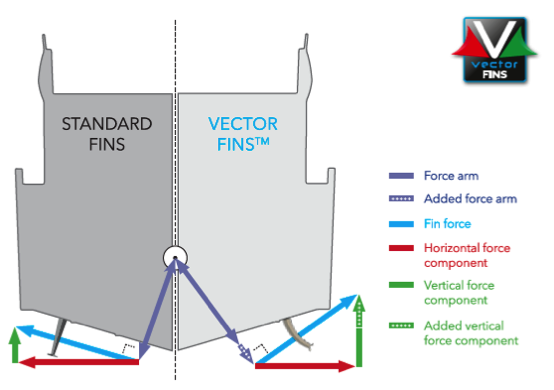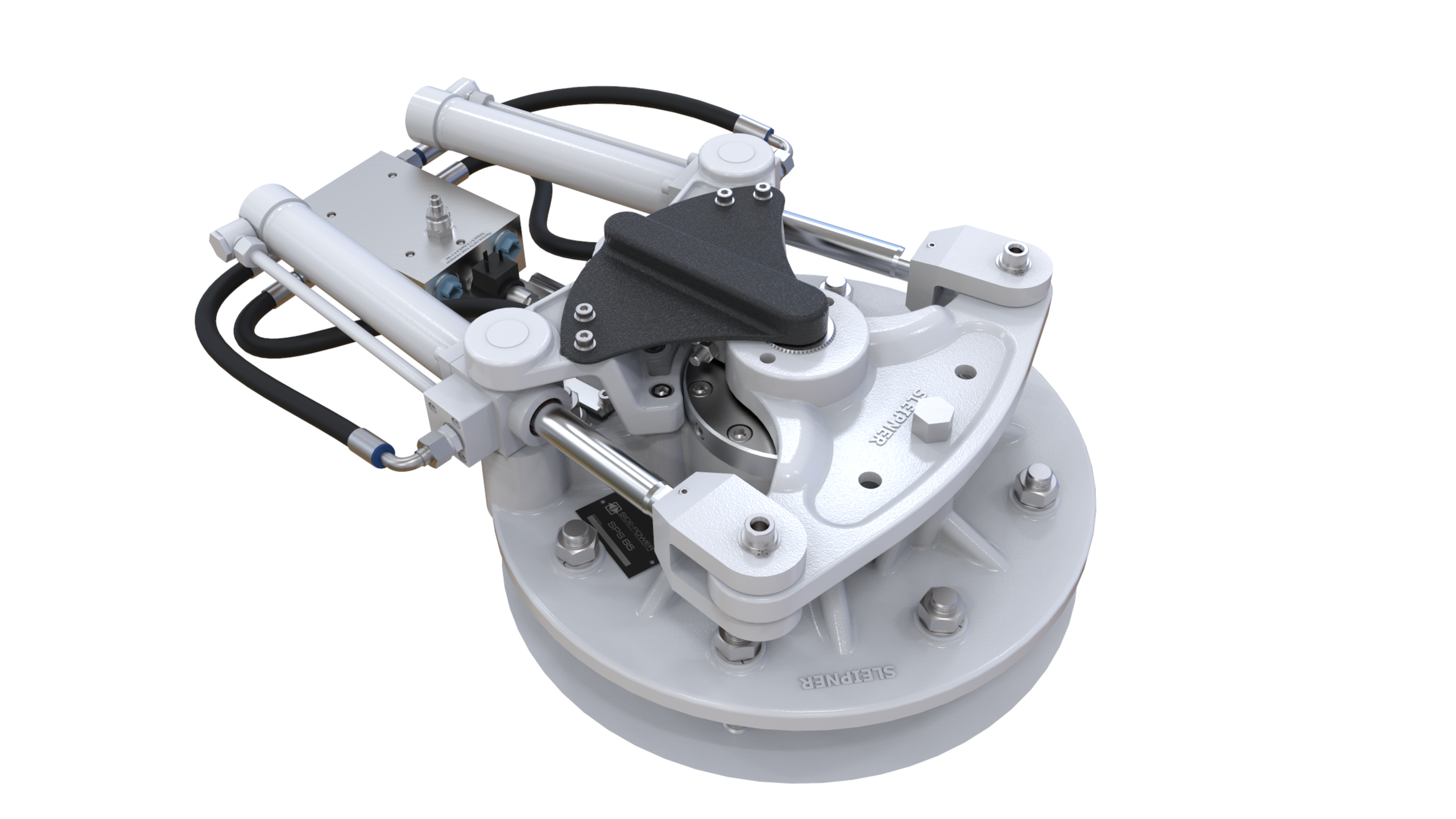If you and all those who step aboard your boat would like to enjoy a smoother ride and reduced chance of experiencing motion sickness or seasickness, there are many benefits to the high-tech Vector Fin stabilizer system offered by Sleipner (Side-Power). They can be utilized by a variety of boat types, but would they work for your boat? Let’s consider the following questions:
What size is your boat?
Vector Fin stabilizers can work well on boats 45 to 150 feet, or even larger using a 4-fin system.
What is your type of hull design?
To determine the best system for your boat, first we want its basic dimensions of length, beam, and displacement, center of buoyancy, center of gravity and “metacentric height,” which is a calculated point that defines how easy or difficult it will be to stabilize your boat. While it may seem counterintuitive, a wide, heavy boat is harder to stabilize than a narrower, lighter boat. Vector Fin stabilizers work very well on modern hulls with relatively flat sections aft. They are for monohulls and are not appropriate for multi-hulls.

Does your boat already have a hydraulic system?
If your boat is already equipped with hydraulic power for a thruster, for instance, you can potentially take advantage of that to power the fin stabilizers. If it doesn’t, a hydraulic oil tank and pump from Sleipner can be installed. Alternatively, Sleipner's newest electric actuators negate the need for hydraulic power altogether.
Do you have a generator and if so what size?
For at-rest stabilization on the hydraulic stabilizer system, either anchored or moored, AC power provided by a generator is used to power the system when the engine is off. In a few instances when the boat is on a dock in an exposed or high-traffic area, some owners use shore power to keep stabilizer system running while the boat is docked.
Do you have space to install the actuators?
Located on the inside of the hull, the actuators are connected to and operate the fins. Most boats can fit the actuators into the front of the engine room or just ahead of the engine room bulkhead, but every boat is different. The low profile of the Sleipner (Side-Power) and their virtually silent operation provide more flexibility as to where they can be installed inside the boat when compared to stabilization systems offered by others.

How weight-sensitive is your boat?
Most larger boats can very easily handle the additional weight of Vector Fin stabilizers, which for a 70-foot boat comes in at roughly 500 pounds, all up. That’s considerably less than a gyro system, which can be two to four times the weight.
Do you want stabilization only at anchor, only underway, or at any speed?
The answer to this question will make a big difference in the stabilizing capacity you might choose in any type of system. If your main interest is in a stable ride at high speeds, your Vector Fin Stabilizers can be smaller than if you’ll be using them mostly for entertaining in a rough anchorage. Typically, we recommend a mid-range system that does a good job both at rest and at higher speeds. Vector Fins have the significant advantage of being far more efficient (up to 100 percent) than straight fins, so size for size, they provide more stabilizing power, but more importantly, the lift generated by the Vector Fin shape cancels out the drag from the fins. This means that you can install larger fins which without penalty in terms of boat speed or fuel consumption. This is unique to Vector Fins.
How do you use the boat and in what conditions?
For most types and styles of boat—from displacement-speed trawlers to 40-knot sport cruisers—Vector Fin stabilizers work extremely well at anchor and underway. Some sportfishermen avoid them due to the aggressive way the boats are operated, particularly rapid and frequent reversing at high speeds, though there is nothing about the sportfish hull shape itself that prohibits use of fins. Understanding how you use your boat and in what conditions, as well as your expectation for stabilizer performance, allows us to properly size the fins.
If you have any questions or would like to discuss a system specific to your boat, please contact us. For more on stabilization system choices, read Fins Vs. Gyros.